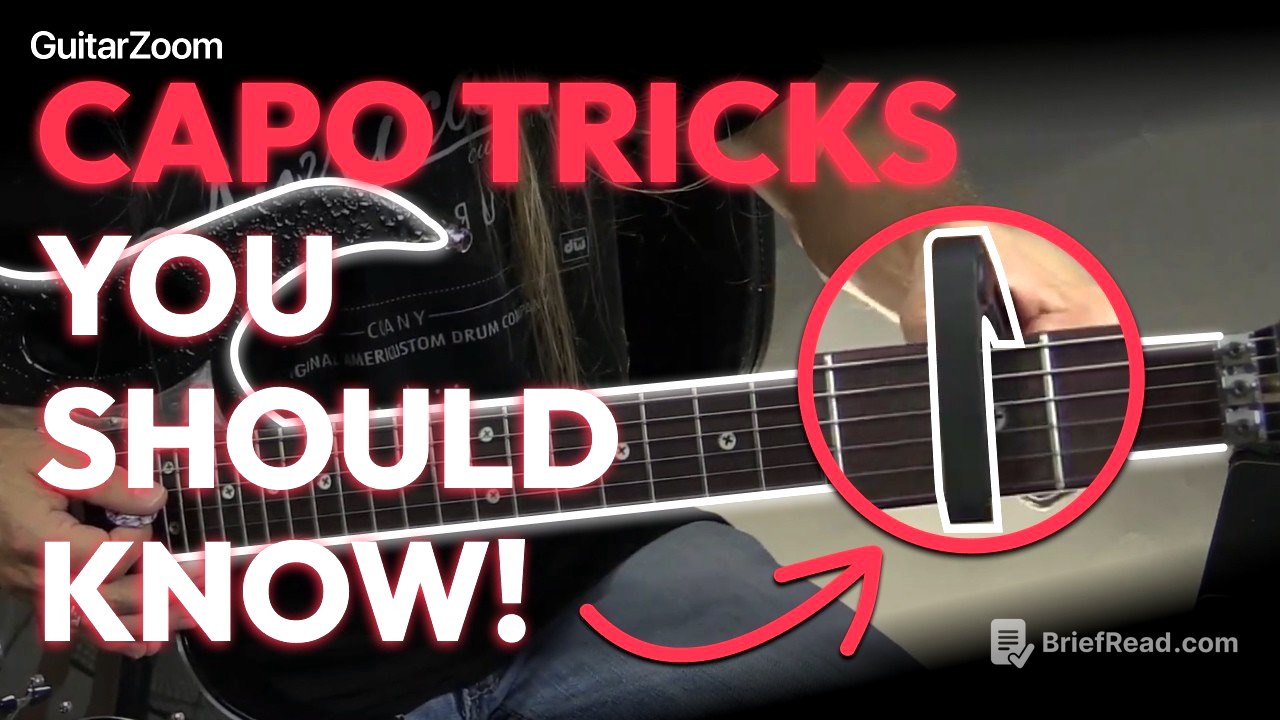TLDR;
This video explains what a capo is, why it's used, and how to use it effectively on a guitar. It covers how a capo essentially shortens the guitar's neck, changing the pitch of chords while maintaining their shape. The video also discusses practical reasons for using a capo, such as accommodating a vocalist's key, maintaining open chord sounds, and simplifying chord progressions for beginners. Additionally, it touches on the importance of understanding basic music theory to fully grasp the capo's function and its effect on the key of the music.
- A capo acts as a movable nut, changing the pitch of chords.
- Capos help match a song's key to a vocalist's range.
- They allow guitarists to use open chords in different keys.
- Capos can simplify playing songs with unfamiliar chords.
- Understanding basic music theory enhances capo usage.
What is a Capo? [0:00]
A capo is a device used to clamp down on the guitar strings at a specific fret, effectively shortening the neck and raising the pitch of all strings. By clamping the capo on a fret, you're essentially moving the nut of the guitar up the neck. For example, placing a capo allows you to play a G chord shape higher up the neck, changing the actual pitch while maintaining the familiar G chord fingering.
Reasons for Using a Capo [2:17]
One primary reason to use a capo is to accommodate a vocalist's range. If a song is in a key that doesn't suit the singer's voice, a capo can shift the key while allowing the guitarist to use familiar chord shapes. Another reason is to maintain the distinct sound of open chords in different keys. Open chords have a unique resonance due to the use of open strings, which bar chords can't replicate.
Practical Applications and Open Chords [4:16]
Using a capo allows guitarists to play in various keys while still utilizing open chord shapes, which have a brighter, more resonant sound compared to bar chords. For instance, if a song is in A flat, which typically requires bar chords, a capo can be used to play the song using open G chord shapes, preserving the open sound. This approach is also helpful for beginners who may not yet be proficient with bar chords, enabling them to play songs using simpler, familiar chord shapes.
Addressing Misconceptions and Teaching Beginners [5:45]
The video addresses the misconception that using a capo is a sign of not knowing bar chords, clarifying that it's a valid tool for various musical reasons. For beginners, a capo can be particularly useful, allowing them to play songs with chords they already know, fostering motivation and enjoyment. It's a practical way to make music accessible and fun while they're still learning more complex techniques.
Key Considerations and Music Theory [7:11]
When using a capo, it's important to remember that while the chord shape remains the same, the actual pitch changes. The guitarist emphasizes the importance of understanding basic music theory to fully grasp the capo's function. Learning the notes on the sixth string and understanding chord progressions in different keys can greatly enhance your ability to use a capo effectively and understand the resulting key changes.









